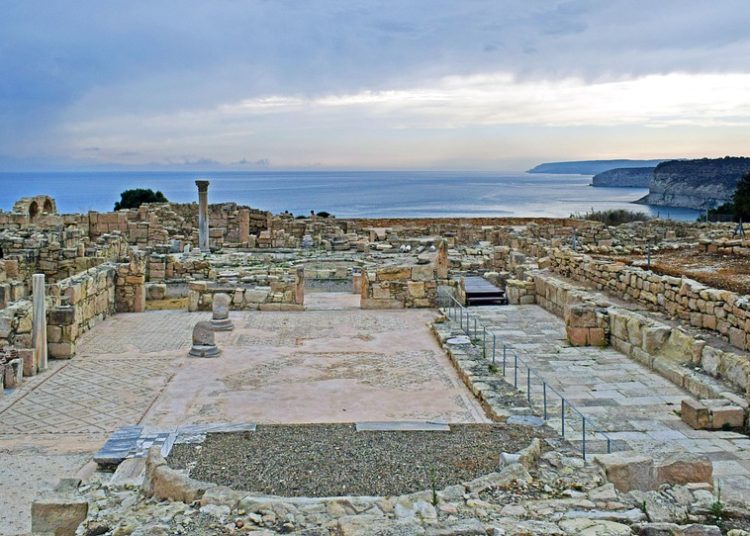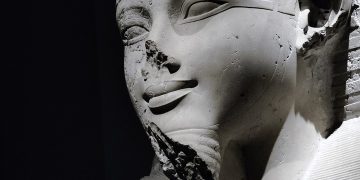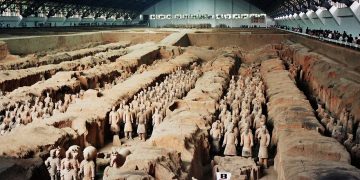Reviving the Past: Exploring the Magnificence of Renaissance Art and Architecture
The Renaissance period, spanning roughly from the 14th to the 17th century, was a time of great cultural and artistic advancement in Europe. This era saw a revival of interest in classical art and learning, leading to a flourishing of new ideas and innovations in various fields. One of the most enduring legacies of the Renaissance is its art and architecture, which continue to captivate and inspire people around the world to this day.
The Renaissance Art: A Celebration of Beauty and Humanism
Renaissance art is characterized by its focus on realism, perspective, and the human form. Artists of this period sought to capture the beauty and complexity of the world around them, often drawing inspiration from classical mythology and biblical stories. Some of the most famous Renaissance artists include Leonardo da Vinci, Michelangelo, and Raphael, whose works continue to be admired for their technical skill and emotional depth.
One of the defining features of Renaissance art is its emphasis on humanism, a philosophical approach that places importance on the individual and their capacity for reason and creativity. This humanistic perspective is evident in the portraits and sculptures of the period, which often depict individuals in a naturalistic and dignified manner.
Key Characteristics of Renaissance Art
Some key characteristics of Renaissance art include:
- Realism: Artists strove to depict the world accurately and in great detail.
- Perspective: The use of perspective techniques to create the illusion of depth and space.
- Emotion: Artists sought to convey the emotional depth and complexity of their subjects.
- Classical Inspiration: Many artists drew inspiration from classical mythology and literature.
The Renaissance Architecture: A Testament to Innovation and Beauty
Renaissance architecture is known for its grandeur, symmetry, and harmony. Architects of the period drew inspiration from classical antiquity, incorporating elements such as columns, arches, and domes into their designs. Some of the most iconic examples of Renaissance architecture include the Florence Cathedral, St. Peter’s Basilica in Rome, and the Palace of Versailles in France.
One of the key innovations of Renaissance architecture was the use of perspective and proportion to create buildings that were both visually stunning and structurally sound. Architects such as Filippo Brunelleschi and Andrea Palladio pioneered new techniques that revolutionized the field of architecture and laid the foundation for future generations of designers.
Notable Examples of Renaissance Architecture
Some notable examples of Renaissance architecture include:
- Florence Cathedral: Designed by Filippo Brunelleschi, the cathedral is a masterpiece of Renaissance architecture.
- St. Peter’s Basilica: Designed by Donato Bramante and Michelangelo, the basilica is one of the largest and most famous churches in the world.
- Palace of Versailles: Designed by Louis Le Vau and Jules Hardouin-Mansart, the palace is a symbol of the opulence and grandeur of the French monarchy.
Reviving the Past: Rediscovering the Beauty of Renaissance Art and Architecture
While the Renaissance may have ended centuries ago, its legacy continues to live on through its art and architecture. Museums and galleries around the world house priceless works of Renaissance art, allowing visitors to experience the beauty and brilliance of this period firsthand. Similarly, many Renaissance buildings still stand today, serving as a reminder of the innovation and creativity of the architects who designed them.
By exploring the magnificence of Renaissance art and architecture, we can gain a greater appreciation for the cultural achievements of the past and draw inspiration for the future. Whether through a visit to a museum, a study of art history, or simply admiring the beauty of a Renaissance building, there are many ways to connect with this rich and influential period of history.
Common Questions About Renaissance Art and Architecture
Here are some common questions about Renaissance art and architecture:
- What are some of the key themes in Renaissance art?
- How did Renaissance artists incorporate humanism into their work?
- What are some notable examples of Renaissance architecture?
- How has the legacy of the Renaissance influenced modern art and architecture?
By exploring these questions and delving deeper into the world of Renaissance art and architecture, we can gain a greater understanding of this transformative period in history and the lasting impact it continues to have on our world today.
Conclusion
The Renaissance was a time of great cultural and artistic advancement, leading to the creation of some of the most iconic works of art and architecture in history. By exploring the magnificence of Renaissance art and architecture, we can gain a deeper appreciation for the beauty and brilliance of this period and the enduring legacy it has left behind. Whether through a visit to a museum, a study of art history, or simply admiring the beauty of a Renaissance building, there are many ways to connect with this rich and influential period of history. Let us continue to celebrate and revive the past, ensuring that the magnificence of Renaissance art and architecture remains a source of inspiration and wonder for generations to come.












